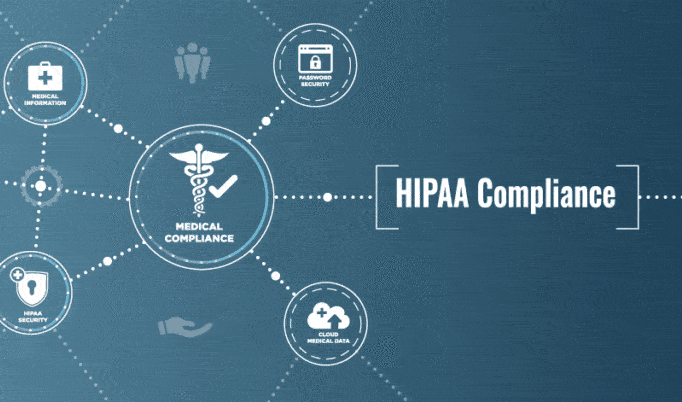The Cloud Center of Excellence: An Essential Tool for Cloud Success
Connectria
Author
Date
August 19, 2020

Today, it’s not a question of whether an organization has workloads housed in the cloud. Instead, the question is what percentage of their workloads they’ve migrated? As reported in Flexera’s 2020 State of the Cloud Report, 61 percent of enterprises plan to migrate more workloads to the cloud this year.
As more workloads are moved to the cloud, cloud budgets consume a larger portion of the corporate budget. In the study, 74 percent of enterprises said their cloud spend already exceeds $1.2 million annually. Respondents expect that to grow by 47 percent over the next 12 months. Additionally, 57 percent said their cloud spend would be higher than planned thanks to COVID-19.
It’s no surprise that optimizing cloud spend was the top priority for 73 percent of respondents. Respondents estimated they wasted about 30 percent. If you’re serious about gaining control over cloud spending as well as other critical aspects of the cloud such as security, compliance, and business continuity, establishing a Cloud Center of Excellence (CCOE) is essential. In this article, I’ll go further into what a CCOE provides and how to get started.
Assembling Your CCOE Team
When building a CCOE, the “who” is as important as the “what”. Many experts suggest starting with a small team drawn mainly from the IT side of the business, e.g., IT operations, network engineers, application architects, database/system administrators, development, etc. A small, cohesive team can help your CCOE get off the ground and keep it manageable.
But when you look at the types of deliverables the CCOE is responsible for, it’s easy to see why this small, functional team may not be enough. For example, it’s easier to create a cloud strategy aligned with the goals of the business if you include individuals from the business on the team. In some organizations, LOBs own the budget for the cloud, so this also makes it easier to get the funding you need.
Since a lack of executive buy-in is still one of the most common reasons IT initiatives fail, it’s also vital to have executive-level representation on the team. You don’t need an executive-level member for every department, but you must recruit an executive sponsor who can effectively “sell” your strategy to the rest of the organization.
Managing Your CCOE Team
Now that your team has vastly expanded from its original form, how do you keep it manageable? Also, how can you keep everyone involved, without wasting hundreds of hours a month in meetings?
One approach is to designate categories of team members using the RACI model. RACI stands for responsible, accountable, consulted, and informed, and every member of the team should be assigned to at least one of these categories:
- Responsible – These are the individuals responsible for executing a task, whether that be creating the strategy or carrying it out. Given the nature of the CCOE, these people are usually from IT.
- Accountable – These individuals are ultimately responsible for the success (or failure) of the initiative. These roles are most likely management level and higher.
- Consulted – These individuals have a voice in the decisions made, but they aren’t necessarily the ones who need to approve the decisions or carry them out. Most of your business owners will probably be in this group.
- Informed – These are the individuals that need to be kept informed, either directly or indirectly, on decisions and CCOE progress. Your executive sponsor is often in this group. (Unless he or she is already in the accountable group.) Other non-sponsor executives may also be in this group.
Whatever your meeting cadence (daily, weekly, monthly, etc.), the responsible and accountable roles are usually included every time. Subgroups, e.g., IT security, might also meet separately and report back to the larger team. Breaking out these task-based teams can help you avoid too many all-day meetings.
Setting Up Your CCOE: Plan the Work, Then Work the Plan
Individuals who are to be consulted or informed don’t need to be at every meeting. Inexperienced project managers tend to make one common mistake which is to try to get their executive sponsor to attend every meeting. That’s a great way to lose sponsors! How often you consult/inform these individuals depends a great deal on expectations and your organizational culture.
Creating an effective CCOE doesn’t happen overnight. There’s a great deal of organizational work that has to happen first, especially if your team is inexperienced or you’ve never taken the time to formalize your cloud strategy. When we work with clients to help them build a CCOE, we break the project down into phases for planning and building.
Phase 1: Planning for Success
Setting up your CCOE framework will require strong cross-functional collaboration with key stakeholders to achieve agreement on the challenges that need to be addressed in your cloud strategy. If you’ve chosen the members of your CCOE wisely, you’ve already created a strong cross-functional team. Three foundational documents this team should create immediately include:
- The CCOE Charter – A written charter will help you gain buy-in to the purpose and functions of the CCOE.
- CCOE Governance – Governance details how the CCOE will be measured and what success looks like. Remember to include milestones but be realistic about timelines. For example, if only 20 percent of your workloads are in the cloud, it may not be feasible (or advisable) to increase that to 80 percent by the end of the year.
- Communication Strategy – By establishing a regular cadence and method of communication throughout the organization, the CCOE can help smooth cloud strategy buy-in and adoption.
A large part of building an effective CCOE is asking the right questions as you build your strategy. If your organization is playing catch-up with its cloud strategy or you’re making a major change, e.g., migrating from a private cloud to a public cloud, you might want to consider a facilitator-led Cloud Readiness Workshop. Just having an external perspective can help you “know what you don’t know.”
Whether you engage an external resource or decide to go it alone, here are just some of the questions you’ll need to answer. I’ve broken them down into three core areas: Applications, Tools, and Processes. This list is not all-inclusive, but hopefully, it’s enough to get the dialogue started.
Applications
- Do we have any applications that aren’t architected for the cloud? If so, you may want to build into your charter an initiative to explore replacing or re-platforming these applications.
- Which cloud platforms are right for each workload?
- What dependencies do we need to be aware of when migrating workloads?
- What are our recovery objectives for each of these workloads?
- If workloads are in the cloud already, are there any concerns, e.g., resiliency, security, or performance?
Tools
- How will we maintain visibility into our cloud environments?
- Which KPIs will we monitor?
- What tools will we need to deploy to ensure the security of our data and systems?
- How will we analyze and predict monthly cloud costs?
Processes
- How often should the CCOE meet?
- Who will be accountable for overseeing costs, performance, security, etc.? It’s easy for CCOE members to get so wrapped up in their own area that they don’t see the big picture, e.g., how the company’s monthly cloud spend has ballooned out of control.
- What strategies will we deploy to control costs? Ensure security? Ensure performance?
Phase 2: Building the CCOE: Creating the Frameworks
The CCOE provides the structure needed for a successful migration to the cloud and the ongoing management of cloud-based resources. The assessments completed in Phase One should now be used to define frameworks that help you govern and meet both technical and operational requirements.
The Technical/Architectural Framework covers processes such as incident management, resource provisioning and configuration, resource availability, and business continuity management. Design standards for infrastructure and mission-critical applications should be established and tools recommended.
An Enterprise Security Framework covers protocols for implementation, change management, identity, and access management, and IT security. Governance standards are created to cover security, compliance, and business requirements.
Enterprise Processes include essential processes such as financial management, capacity planning, and forecasting, organizational change management, and vendor management. Typically, we also include business continuity plans, a project risk register, as well as frameworks for demand and change management in this category.
A framework for Continuous Improvement is required to ensure the CCOE continues to deliver on the goals of the business. Core components of continuous improvement include reporting and analytics, application lifecycle management, and a plan to up-skill staff where needed and to identify areas for automation of critical cloud functions.
Success Requires Accountability
Contact Connectria to speak with one of our cloud experts. When we work with customers with cloud strategy challenges, we frequently find they lack a cohesive plan across the organization. Sometimes, under the guise of enabling innovation or some other worthy goal, individual teams are allowed to set their own cloud strategy. This often results in an IT infrastructure with a complex mix of disconnected systems. Worse, cloud costs are out of control and no one is sure who is accountable for fixing it.
Establishing a functioning, effective CCOE not only provides the foundation for cloud success, but it also helps you create a high-performing governance team that is accountable for results. This team is both the go-to resource for business and process innovation as well as the governing structure that helps the organization mitigate the risks inherent in the cloud.
Keep Reading
Prepare for the future
Tell us about your current environment and we’ll show you the best path forward.
Fast track your project. Give us a call.






